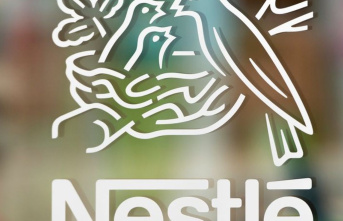In the Mediterranean there are more than 200 species of corals (out of 5600 as described in the world), that they need more protection to survive in a sea of over-exploited by the fishing and harassed by the climate change. The researchers are trying to save these corals, cold-water, who live in deep areas, starting from the 150 or 200 meters, but collide with the lack of political will. “Every step we take costs us an enormous amount of work. We are in a race against the clock to locate where they are, because we still know little of them, while the trawl fishery, which uses large nets that sweep the seabed, continues to make progress. It is to come before the colonies go away”, describes the effort to Pilar Marín, marine scientific of the NGO Oceana. Once located the settlements, the countries should define protection zones, which avoid primarily the destructive fishing and any other activity that will put them in danger.
MORE INFORMATION
The extinction of corals impunity threat to coral red, the Netherlands-breeding reef ‘in vitro’ for aquariums of all Europe The marine life back to the waterfront of BarcelonaIn this struggle, was achieved in 2017 for the 22 members of the Barcelona Convention for the Protection of the Marine Environment and the Coastal Region of the Mediterranean (dependent of the UN) included in the list of endangered species in the last four corals of depth that remained to protect: the yellow, the rooster crest, the chandelier, and bamboo. That same year, he located in the Balearic islands, halfway between Ibiza and Formentera, a forest of coral bamboo, critically endangered, more than 400 metres of depth. This garden and another that exists in the Aeolian islands (Italy) are the best preserved that have been localized for the time being in the Mediterranean. Experts estimate that the population of this species has decreased by 80% in a hundred years. "Appearing on the list means that they are threatened and that it is necessary to do something for them, but the Barcelona Convention has no competence in fisheries, that is the greatest danger they face," says Marin. In addition, as of that shield, "countries should have taken measures of protection, but, today, it has not been done absolutely nothing" concrete, scientific. "At the time that there is evidence that there are copies, would have to close the area, as indicated by United Nations," he added.
last November, Oceana scored a victory. The General Fisheries Commission for the Mediterranean (UN body formed by 23 countries, among them Spain, France and Italy) agreed to the adoption of a regulatory framework to preserve these delicate ecosystems. "We have been three years trying to set this policy, because this committee is the one that has competence in fisheries," he says. But, despite the fact that it is a very important step, "is not yet binding and have not been established what actions are to be carried out", says the success Marín, who participated in the meeting.
yellow Coral in the Mediterranean Sea. Oceanauntil we get the protections, the corals are faced with the enormous nets of trawl fisheries to "sweep the bottom of the sea, fall over everything in its path and can destroy colonies of several centuries in a very short time", explains Covadonga Orejas, scientific of the Spanish Institute of Oceanography in the Balearic islands (IEO) and a coral specialist. It is not necessary to the direct impact, the turbidity of the water caused by suspended sediment that causes this form of trap is not selective can bury them. Other fishing gear such as fixed nets, longlines or pots can cause damage when released and become entangled in the corals. With the disappearance of this marine habitat, a great variety of organisms, including species of fishing, they lose the structures in which they take refuge. The recovery of the corals is very complicated due to its slow growth, just a few millimeters a year. The development is especially slow in the develop a skeleton of calcareous or have forms massive (a type of flora very lush) or shrub (on the branch).
The commercial interests also stand in the way of conservation of these delicate organisms. Ears puts as an example the red coral used in jewelry. It stands in the heading of the species that is commercially exploited without sufficient protection, but for the moment, scientists have not managed to increase their armor. Despite this, the researcher of the IEO does not give up its efforts to convince all parties involved of the importance of these unique ecosystems. "There are a lot of people that live of fishing, but you must keep in mind that if it wipes out the habitat disappear, the resources. In a forest without trees, there will be no wildlife, because the animals are where they find refuge, where they can build their houses", he argues. In the case of the sea, the corals are the organisms that carry out the function of the trees. "With their structures, created a space of three dimensions where you can live on the rest of the fauna", concrete.
The corals have to endure, in addition to human activities, the effects of climate change, with rising temperatures and the acidification of the oceans because they absorb more CO2 than they can bear. These two factors influence the ability of corals to absorb the carbonate they need and grow, even to kill them in the long term.
recent corals protected
In 2017 is included in the list of endangered species in four coral depth fundamental for the Mediterranean, according to the NGO Oceana.
The coral bamboo (Isidella elongata), a species virtually endemic to the Mediterranean whose population has decreased by 80% in a hundred years, so it is listed as “critically endangered”. Their decline affects many species of shrimp and fish associated with these coral gardens, such as hake, which uses them as breeding areas.
The yellow coral (Dendrophyllia cornigera) and the coral chandelier (Dendrophyllia ramea) are listed in the red list as “endangered” and “vulnerable”, respectively. Suffer from the impact of fishing techniques aggressive with the fund.
The coral crest of rooster (Desmophyllum dianthus) are considered to be “in danger” and it is estimated that its population has fallen by half in the last 60 or 70 years.
Date Of Update: 05 January 2020, 03:00









